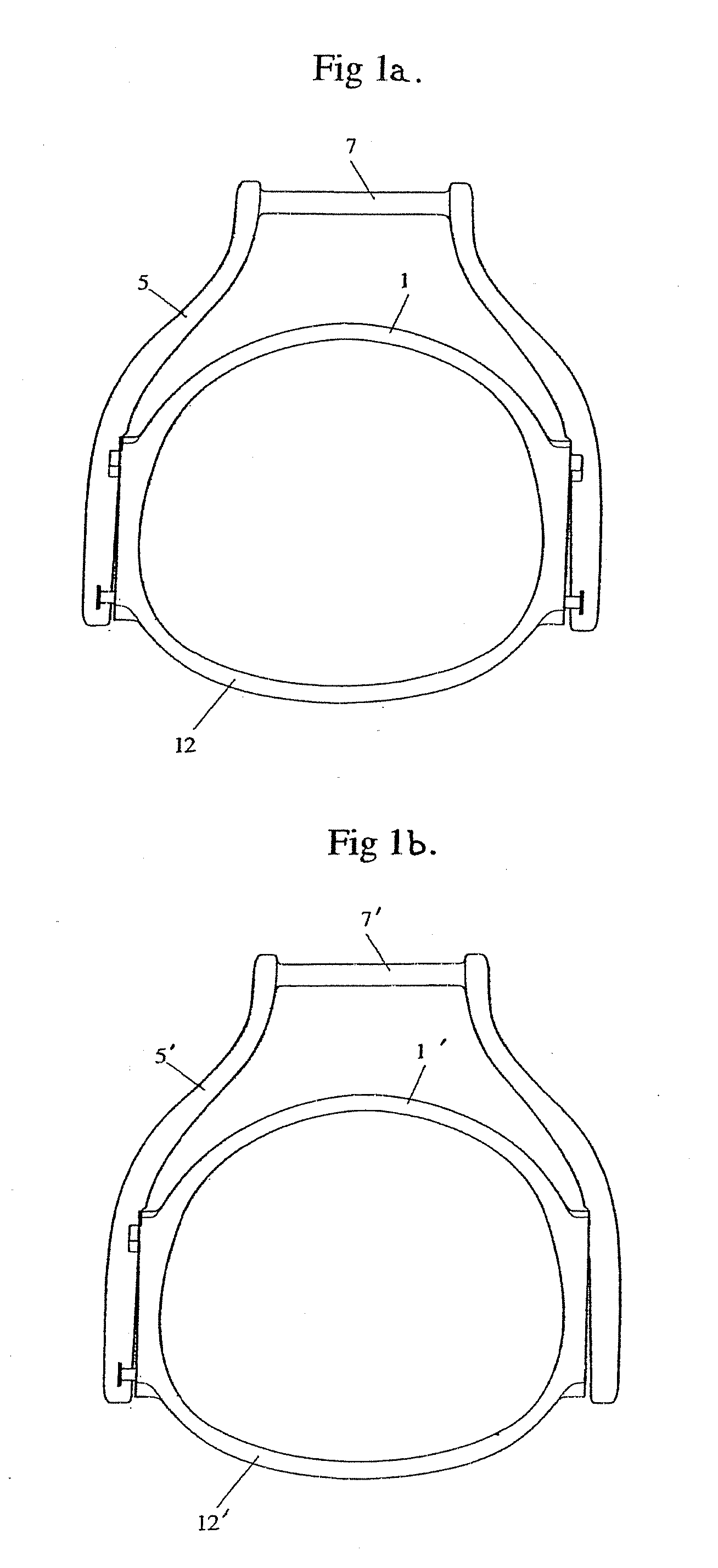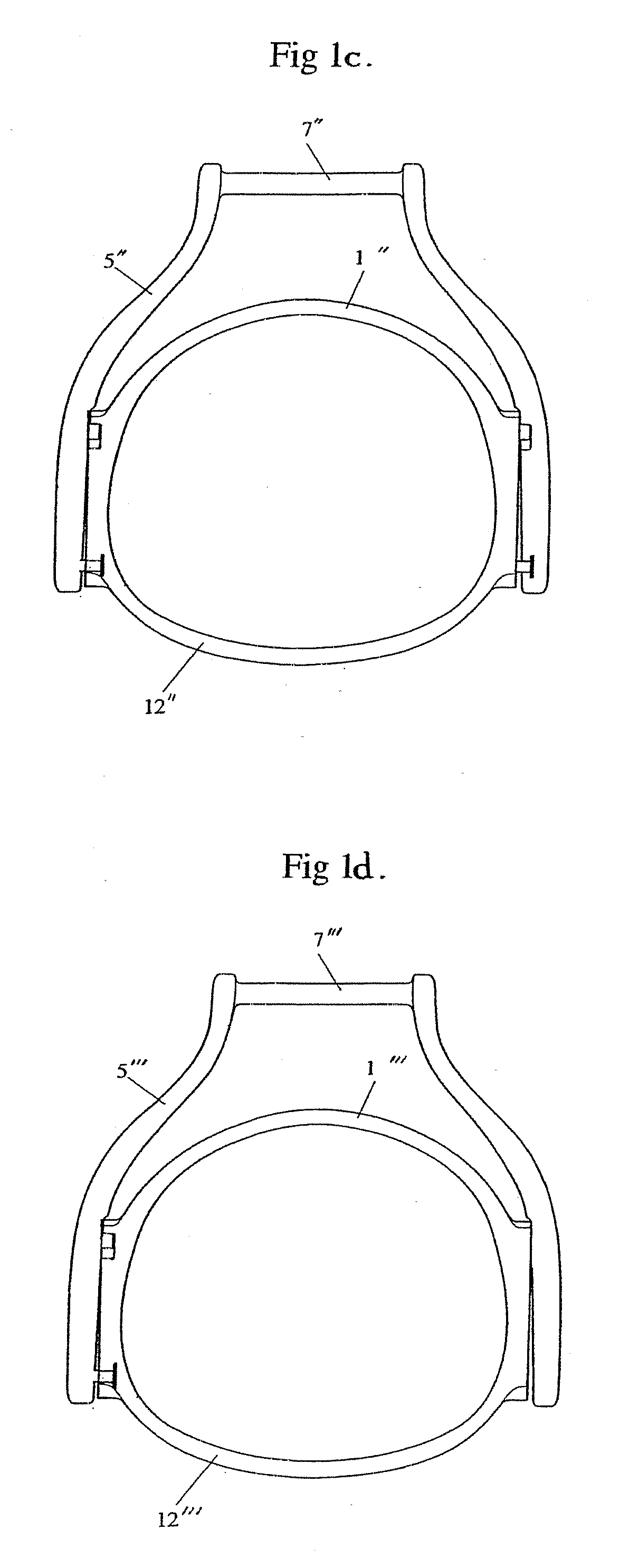Safety Stirrup
a safety stirrup and stirrup technology, applied in the field of horse riding stirrup, can solve the problems of many people being injured or killed, not having enough time to withdraw their foot from the stirrup, and serious injury or death, and achieve the effects of convenient use, reduced manufacturing cost, and simple structur
- Summary
- Abstract
- Description
- Claims
- Application Information
AI Technical Summary
Benefits of technology
Problems solved by technology
Method used
Image
Examples
Embodiment Construction
[0055]FIG. 1a shows an inverted U-shaped mounting member (5) comprising a horizontal bar (7) to which the stirrup strap may be attached. Located within the U-shaped mounting member is a D-shaped foot support (1) for receiving a rider's foot, including a footplate (12) which rests against the sole of the rider's boot.
[0056] When the stirrup is in normal use, the foot support (1) lies in the same plane as the U-shaped mounting member (5) and is held in place by two mountings located on either side of the U-shaped mounting member. In the embodiment shown in FIG. 1a, the projections of the mountings and two additional projections are all located on the foot support (1).
[0057]FIG. 1b again shows an inverted U-shaped mounting member (5′) comprising a horizontal bar (7′). Located within the U-shaped mounting member is a D-shaped foot support (1′) including a footplate (12′). In this embodiment there is one mounting, the projection and additional projection being located on the foot suppo...
PUM
 Login to View More
Login to View More Abstract
Description
Claims
Application Information
 Login to View More
Login to View More - R&D
- Intellectual Property
- Life Sciences
- Materials
- Tech Scout
- Unparalleled Data Quality
- Higher Quality Content
- 60% Fewer Hallucinations
Browse by: Latest US Patents, China's latest patents, Technical Efficacy Thesaurus, Application Domain, Technology Topic, Popular Technical Reports.
© 2025 PatSnap. All rights reserved.Legal|Privacy policy|Modern Slavery Act Transparency Statement|Sitemap|About US| Contact US: help@patsnap.com



